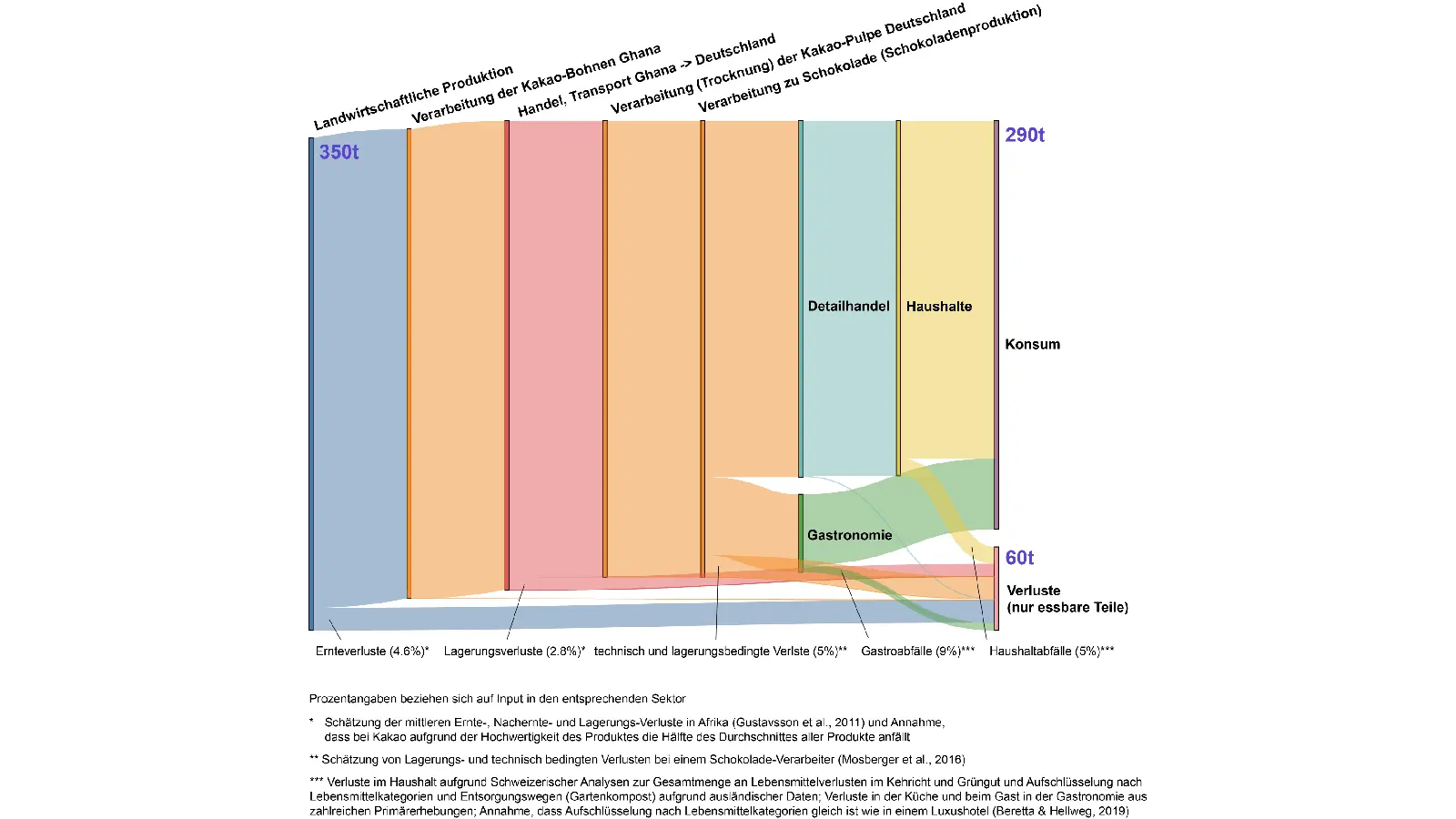Food Chain Model for sustainable food chains and food waste prevention
Description
The main product of this project includes five modules (toolboxes), which together form the Sustainable Food Chain Model (FCM) and enable the modeling of the environmental effects of entire food value chains. This makes it possible to model scenarios of value chains with their impact on the environment, which is essential when making decisions for a sustainable food system.
The FCM's first toolbox includes a mass and energy flow analysis from agricultural production through all stages of the value chain to the household or restaurant where the food is consumed. Each stage of the value chain is characterized by processes (e.g. harvesting, storage). Food losses (e.g. 5% edible crop losses) as well as environmentally relevant processes (e.g. 2kg diesel consumption per kg crop yield) are assigned to the processes. This toolbox is called “scenarios" because multiple scenarios can be modeled based on a specific food value chain. In this way, the effect of changes in parameters (e.g. electricity mix used) on the environment can be estimated.
The model allows a free designation and arrangement of the stages of the food value chain to be able to represent different cases (e.g. one or more processing stages). The food route can branch out, for example if some of the food from processing is delivered to the retail trade and the rest to catering establishments. The figure shows an example of the mass flow analysis of chocolate with three processing stages and branches into retail and catering.
The second toolbox contains a list of causes food losses can be assigned to. In this model, food losses are not statically classified as avoidable or unavoidable, but the causes of food losses are flexibly assigned to avoidable and unavoidable food losses depending on the case or research question. Models are therefore compatible with different definitions.
In the third toolbox environmentally relevant processes are linked to data sets from life cycle assessment databases and weighted using factors. This allows data from different databases as well as primary and literature data to be combined and harmonized. In two further toolboxes, suitable sets of environmental assessment methods can be created to answer specific questions and a list of sources can be provided. This means that all entered data can be linked to sources and commented on individually.
At the current stage of development, the FCM can model entire food value chains. By changing parameters, scenarios can be created and compared. The comparisons can focus on any aspect of the value chain, e.g. on the amounts of food losses per level of the value chain, per process or per cause and broken down into avoidable and unavoidable. Environmental effects of processes, end products, food losses or entire scenarios can also be compared, e.g. the reference scenario “cheese production with whey feeding" with the alternative scenario “cheese production with valorization of whey to whey protein isolate and lactose powder". The results can be used to derive successful measures to reduce environmental pollution in the following three areas of action:
- Producing food more ecologically (e.g. using renewable energy instead of fossil energy for food processing)
- Increasing the efficiency of value chains by avoiding food losses (e.g. halving food waste in households)
- Selecting more sustainable products and menus for consumption
The project was carried out with the practical partner KOA, which provides data for the modeling and evaluation of a case study (chocolate with utilization of the cocoa pulp side stream that would otherwise be wasted or used for compost). In this way, the application of the model was tested in practice, improved and the future usability of the tool was evaluated.
Outlook
The integration of further functionalities into the FCM in follow-up projects should enable the modeling of shopping carts and coupled food value chains (e.g. cheese and whey production), the operation of the tool via target group-specific user interfaces and the constructive collaboration between different actors thanks to user environments with specific user rights.
The FCM will be further developed in the follow-up project "Trilogy Model for Sustainable Nutrition" (for more details, please see the Further Information section below), which is financed internally by the ZHAW. According to current planning, a larger follow-up project will be started in 2024.
Key data
Projectlead
Deputy Projectlead
Project team
Project partners
Koa Switzerland AG
Project status
completed, 05/2022 - 02/2023
Institute/Centre
Institute of Food and Beverage Innovation (ILGI); Institute of Computational Life Sciences (ICLS)
Funding partner
Schweizerische Akademie der Technischen Wissenschaften SATW
Project budget
24'960 CHF

